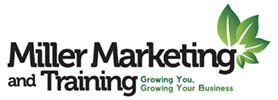Organize And Make Contact
As covered in the last issue, prospects are the life-blood of any salesperson’s career. But, once aware of them, how do you organize your contact? When you call, are you getting right through to the decision maker and more importantly, are you getting the appointment?
Organization & Telephone Techniques
Two essential “salesperson skills” to master are prospect organization (i.e. a contacting system) and telephone techniques. It still hurts to think of the time and sales I lost before I developed an effective contact system. The nature of the interiorscape business, dictates that we will have many prospects in various stages of the sales process. One firm may not need a follow up until its present contract expires – 10 months from now; another needs a phone call in two weeks, while still another wants a proposal “yesterday.” We should be able to handle these tasks with no sweat, plus 50 to 100 more just like them and be ready to add a new prospect at any time.
My system requires four essential tools: a ring binder, client contact sheets (lined paper with holes), numbered tabs and a day timer (or calendar). The client contact sheets are at the heart of this system. They contain all the vital information about your prospect. Use one sheet per prospect (or company) and begin compiling a profile by writing down “everything” you know about that company and your contact person within the company (preferably the decision maker).
Harvey Mackay, author of Swim with the Sharks requires his salespeople to fill out what he calls the Mackay 66 – a thorough questionnaire (66 questions to be exact) designed to reveal any information about a prospect that could help to close a sale (or retain a valued customer). The Mackay 66 does not just ask for a client’s name or address, but asks about his/her family, children’s names, ages and even favorite sports teams. The contact sheet them becomes a conversation log, for recording new information everything time you talk to that prospect. The key is to have the sheet in front of you every time you make a contact (usually via phone). This is easier said than done and requires real discipline. A trick I use is to only put a prospect’s name on my daily task list – not their phone number. This way, I must open to the correct page for the number every time I want to call. I’m more apt to add information if I’m on the right page. Remember this Chinese Proverb, “The pales ink is better than the best memory.”
Since different prospects are in different stages of the sales process, I use numbered tabs. Tab one is for new prospects (not yet contacted) Tab two is for my most current prospects (those closest to a new sale and my favorite). Prospects who require a follow up in three to six months go in Tab three and those who are more long term (six months and up) are under Tab four. I even have a Tab five for prospects I’ve talked to who were not interested “at this time” – you never know. The three-ring binder makes it easy to move prospects to different tabs as they progress or digress (as sometimes is the case) throughout the sales process.
Update Your Calendar
This whole system breaks down without a calendar. Remember this is a “contacting system.” Therefore, every time you make contact with a prospect, you should have a corresponding entry on your calendar to know when to make a new contact!! The entry made on your calendar (either a daily task list or month-at-a-glance) is quick and very brief because it always refers you back to the contact sheet, which has all the details. For example, an entry on your daily task list for today reads: Date Serv. – GT 4. You flip to green tab number four and look up Data Services, Inc. and find that months ago you spoke with Mrs. Wilson the office manager, and she asked you to follow up today because their plant leasing contract was expiring soon. You also see she was going on a cruise (information she volunteered) so you ask, “how was the weather in the Bahamas?” Most of the entries on you contact sheets will be repetitious, so develop your own system of abbreviations. An entry that reads 6/19 LM-4-J-2-CB means to mean that on June 19th I left a message for Jim to call me back.
The worst thing to happen to any prospect is to sit dormant when action was needed. For that reason, every time you make an entry on a contact sheet be sure you have an entry on your calendar to follow up again – whether it’s for this Thursday or 18 moths from now.
Sales Software At Your Fingertips
If you are using any of the new Sales Contacts Software (a.k.a. Sales Automation) this system probably sounds a little archaic. Just the other day, I spoke with a woman who loves her ACT software for contacting and following up on prospects. Other good ones I’ve heard about (but have no experience with) are Lotus Organizer and Sharkware. It’s incredible to see what kinds of things these software packages can do.
Because we in the interiorscape industry are “outside” salespeople, this software would have to be used with a Notebook or Laptop Computer – it won’t do you any good sitting on your desk at the office. That little twist adds about $2,500 to $3,000 to the Sales Automation equation – but with some of the added benefits, like quickly cranking out proposals, it may be worth it. The bottom line, though, is that the best and most powerful contacting system is the one you will use. A friend of mine recently confessed that his investment into a Notebook loaded with software, including Lotus Organizer, had become a “very expensive telephone directory.”
Tackling Telephone Techniques
Your number one means for making contacts is the telephone. How are your telephone skills? How are you at getting through to the decision maker? When you do get through, do you have a planned interest and benefit statement, or do you just say whatever comes to mind? Because the telephone is so important in following up on prospects, our ability to use it well will have an impact an our bottom line.
When we place a call to a prospect, the first person we talk to is rarely the decision maker. It is more often the receptionist or secretary, known affectionately by salespeople as the “blocker” or “gatekeeper.” This person’s job, among others, is to preserve the decision maker’s time and limit access or unnecessary interruptions. Live interior plants are a vial part of an office or commercial environment, so your call to Mr. Prospect is anything buy unnecessary – right?!
Our contact with the gatekeeper should be courteous, professional and friendly. It must also be direct and deliberate, but it should never be adversarial or become a test of wits. The person who holds this position is often a valuable source of information, which may help you make the sale later.
Preparation is the key to getting around a blocker. You must know exactly what you’re going to say the moment someone answers. My “deliberate” technique begins when the secretary offers her name after announcing the company name. if she answers “Good afternoon, IBM this is Kathy, may I help you,” my first response is to repeat her name. When I say, “Hi Kathy, this is Brad Miller calling,” Kathy is not sure if she should know me or not. Also, by stating your own name first with confidence you are emphasizing that someone important is calling. After stating my own name, I almost always ask for the prospect by using his or her first name “only” – this of course means it could be a friend calling. Then, after stating my company name I quickly add, “would you please tell Jim I’m holding? Thank you.” Or a variation could be, “would you please tell Jim I’m calling? I’ll hold, thanks.” Many times a call blocker will be caught off guard and will forget the perfunctory “what’s this call in reference to.”
The opening script then sounds like this: “Hi Kathy, this is Brad Miller calling from Interior Plant Scapes, I’m following up with Jim, would you please tell him I’m calling? I’ll hold, thanks.” Courteous and friendly but deliberate.
But what if the gatekeeper doesn’t forget to ask you, “what is the call in reference to?” Again, our response must be planned and deliberate.
If your prospect has already called you back and you missed the call, by all means say, “I’m returning Jim’s call.” A return call is always treated with high priority. Maybe you are following up on information you sent (which is personally my favorite and most effective). The best response then is, “I’m following up with Jim on some correspondence.” Still another technique is to use a name that has some meaning to Jim. It could be the person who gave you his name or perhaps the name of someone in the same company. Then you simply say, “I’m calling for Jim, Wes Jacobs asked me to give him a call.” Make friends with the person who answers the phone, they could really make your life difficult if you don’t.
Once You’d Made Contact
When you do reach the decision maker, the two most important things to remember are gain attention and have a purpose for calling. We gain a prospect’s attention with an interest and benefit statement. The statement you use must be compelling and original enough for your prospect to want to hear more. The first sentence should be an example of an interest benefit statement in the form of a question. Because we can’t sell plants over the telephone, most often the purpose of our call is to set an appointment at the prospect’s place of business. On my desk, I keep an index card that says simply “Ask For The Appointment!” It’s easy to get sidetracked while talking to a prospect, but if you keep your purpose in mind (and in front of you) you will stay focused on the big picture. Getting an appointment is a little sale you’ll have to close before you make a big sale.
A skill is an ability we have acquired through repeated use and disciplined practice. That is exactly what will be required to develop the skills of organizing prospects and effectively using the telephone. If we will invest that effort the results will show – in dollars!





